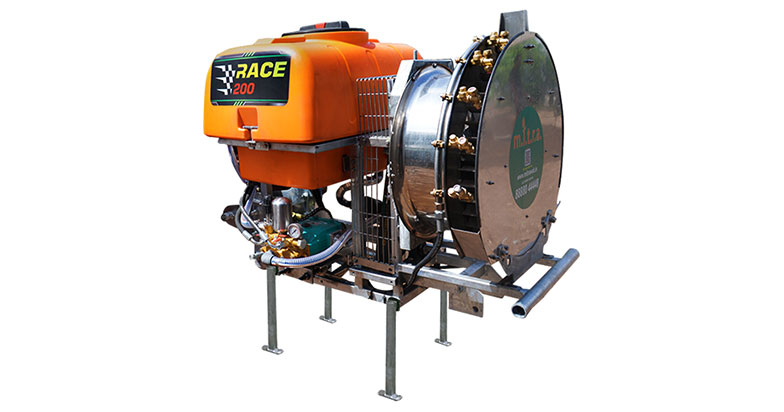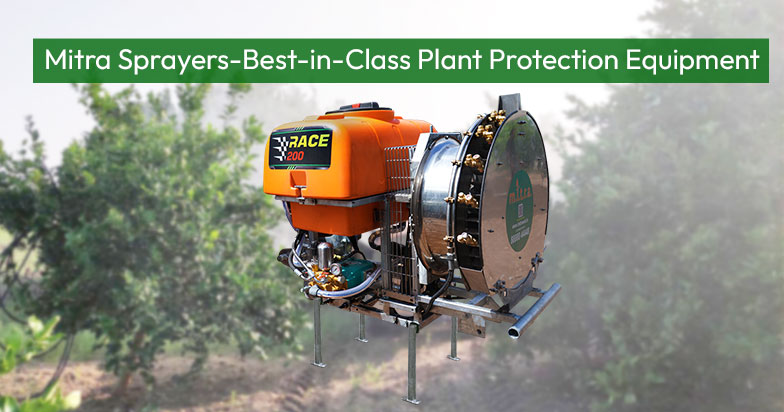In the world of modern agriculture, ensuring the health and vitality of crops is paramount. Plant protection equipment plays a pivotal role in safeguarding crops against pests, diseases, and other threats.
Chemicals are widely used for controlling disease, insects, and weeds in crops. They are able to save a crop from pest attack only when applied in time. They need to be applied to plants and soil in the form of spray, dust, or mist. The chemicals are costly. Therefore, equipment for uniform and effective application is essential. Dusters and sprayers are generally used for applying chemicals. Dusting, the simpler method of applying powder form chemicals, is best suited to portable machinery, and it usually requires simple equipment. But it is less efficient than spraying, because of the low dust retention. High-volume spraying is usually effective and reliable, but it is expensive. Low-volume spraying, to some extent, overcomes the failings of each of the above two methods while retaining the good points of both. Spraying is employed for a variety of purposes, such as the application of:
- Herbicides in order to reduce competition from weeds
- Protective fungicides to minimise the effects of fungal diseases.
- Insecticides to control various kinds of insect pests.
- Micro-nutrients such as manganese or boron.
The main function of a sprayer is to break the liquid into droplets of effective size and distribute them uniformly over the surface or space to be protected. Another function is to regulate the amount of insecticide to avoid excessive application that might prove harmful or wasteful. A sprayer that delivers droplets large enough to wet the surface readily should be used for proper application. Extremely fine droplets of less than 100 microns in size tend to be diverted by air currents and get wasted. Crops should, as far as possible, be treated in regular swaths. By using a boom, uniform application can be obtained with constant output from the machine and uniform forward travel.
Classification of Spraying Technologies
Spraying techniques are classified as high volume (HV), low volume (LV), and ultra-low volume (ULV). Initially, high-volume spraying techniques were used for pesticide application. With the advent of new pesticides, the trend has been to use the least amount of carrier or diluent liquid. In spraying, the optimum droplet size differs for different types of applications. Fine droplets are required to control insects, pests, or diseases and larger droplets are required for the application of herbicides, etc. The greater the number of fine droplets produced by the device, the better the deposition on the target area. The size of the droplet is important as it affects the drift and penetration distance of the droplets towards the target. Hence, a compromise is to be made to prevent drift, achieve wide coverage of the plant or target area, and increase penetration.
Mitra sprayer leading the way in crop protection and crop yield
Mitra Sprayers is at the forefront of crop protection innovation and agricultural yield enhancement. Mitra Sprayer assists farmers in achieving optimal agricultural outcomes with cutting-edge technology and unique solutions. Its cutting-edge sprayers are designed to apply insecticides, herbicides, and fertilisers accurately, minimising waste and maximising efficiency. The Mitra Sprayers protect crops from pests and diseases while supporting healthy development by guaranteeing even and comprehensive coverage.
Introducing the Mitra Race series, MITRA Sprayers’ latest offering that epitomises cutting-edge plant protection equipment:
Race 200 L -: A boon for farmers
- RACE 200 LIT 550 (45 LPM Piston Pump)
- RACE 200 LIT 575 (45 LPM Piston Pump)
- RACE 200 LIT 616 (45 LPM Piston Pump)
- RACE 200 LIT 550 (55 LPM Diaphragm Pump)
- RACE 200 LIT 575 (55 LPM Diaphragm Pump)
- RACE 200 LIT 616 (55/65 LPM Diaphragm Pump)
- RACE 200 LIT (Piston Pump Models)

Features:
- Large Tank Capacity: The Race 200L’s 200-litre tank reduces the need for regular refills, allowing for longer spraying sessions.
- Uniform coverage & Less power consumption: This method assures accurate coverage and minimises overlap, resulting in less chemical waste.
- Efficiency and Speed: The Race 200L swiftly covers huge areas, making it suitable for quick applications.
How the Race 200L Helps in Spraying:
- Precision: A good quality diaphragm pump provides continuous flow and chemicals that are sprayed precisely, eliminating waste as well as the possibility of overapplication.
- Time Efficiency: The Race 200L’s quick coverage capacity minimises spraying time, allowing farmers to focus on more important duties.
- Sustainability: Precision spraying not only saves pesticides but also has a lower environmental impact, making it a viable option in modern agriculture.
MITRA Sprayers, with its latest product, the Race 200L, continues to be among the leaders in plant protection equipment innovation. As agriculture faces new difficulties, such as the need for better yields and more sustainable practices, goods like the Race 200L become increasingly important. Farmers may protect their crops more effectively by investing in cutting-edge technology such as MITRA Sprayers, resulting in a healthier and more abundant yield.

